If you’re planning a trip to Colombia you surely have many questions on your mind! Having traveled around the country for 3 months, I can offer some answers based on first-hand experience.
Colombia is a phenomenal destination, but it’s a good idea to research your trip to make it the best it can be. For further information, don’t miss my route for 7 to 10 days in Colombia as well as my other Colombia posts.
Plan your visit to Colombia!
Essential knowledge
What should you know about Colombia?
Firstly, Colombia is very big! It’s roughly twice the size of France. Trying to include everything in a single trip is impossible unless you have a lot of time. You can check out these Colombia itineraries for some ideas on specific regions or cities to tackle for a first-time trip to Colombia.
Secondly, Colombia is not nearly as unsafe as it once was. While it’s far from a crime-free paradise, popular tourist destinations are quite safe these days — at least on par with many other South American destinations. Of course, you still have to be a bit more careful in Colombia than in other parts of the world.
Thirdly, thanks to its diverse geography, you can have a great variety of experiences. It has a Pacific and Caribbean coast (both very different), the start of the Andes mountain range, the Amazon rainforest, sandy deserts, hilly coffee country, tropical plains dotted with cow ranches, and many buzzing cities.
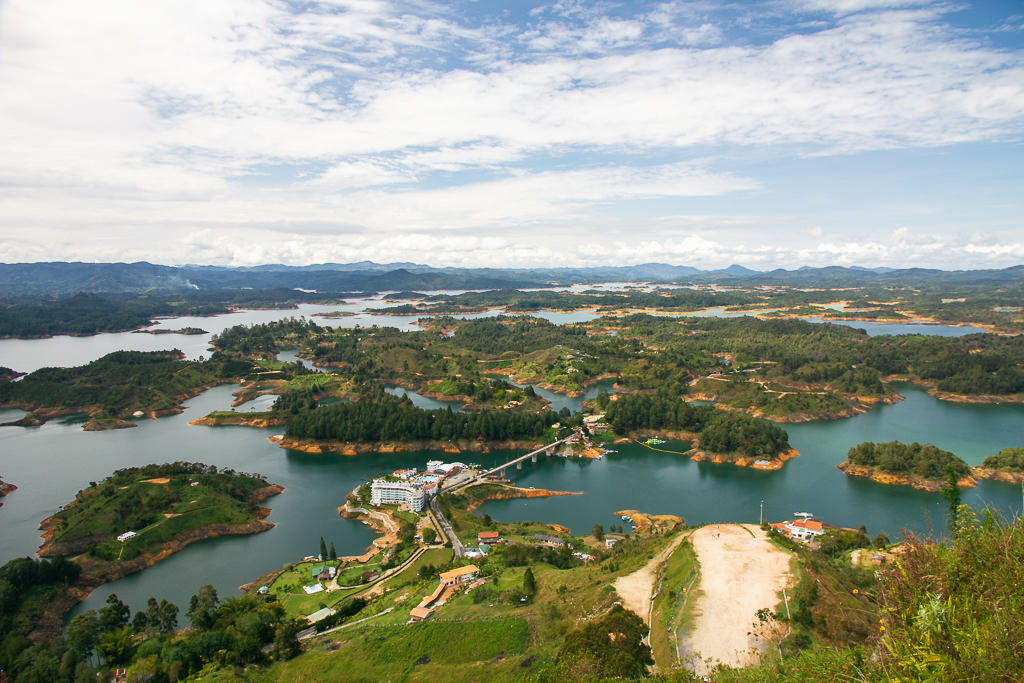
What is Colombia famous for?
Beyond certain clichéd images around narcotrafficking, Colombia is known for many much more notable things!
Firstly, it’s where much of the world’s finest Arabica coffee is grown. Thanks to some unique climate conditions and, increasingly, some amazing domestic coffee roasters, you can get some amazing coffee in Colombia.
Its best-known dishes include a very hearty platter known as Bandeja Paisa and a delicious soup called Ajiaco. Like many South American countries, you can also get great varieties of exotic fruits at the markets.
Cities like Medellin and Bogota are famed for their beautiful street art, Barranquilla has the world’s second-biggest carnival, and Cali is often considered the world’s salsa dancing capital.
Artists such as Botero, known for sculpting and painting exaggerated “round” characters, and many literary writers following the Magical Realism style, hail from Colombia.
Besides this there are some quirky things Colombia is known for, which will be mentioned later in this article!

Is it Columbia or Colombia?
To be clear: it’s NOT spelled Columbia. It’s Colombia with an “o”. Yes, it’s spelled differently from, say, Columbia University.
Why is this important?
Well, Colombians definitely appreciate it when you spell their country correctly. It’s also super important when asking for tips online. Spell it with a “u” and you’ll get a bunch of angry responses. Spell it correctly and people are sure to offer you some valuable travel tips.
Worries or doubts
Is Colombia safe?
It’s no secret that Colombia has historically had many security issues. But with the official end of long-running internal conflicts, the problems are thankfully relatively minor today.
Extreme safety issues are not of such concern anymore, particularly in tourist-friendly areas, but it’s still wise to take essential precautions against basic crimes like theft. There have been increased reports lately of muggings in some specific cities like Bogota and Santa Marta. A good rule is to take official taxis when moving around the city (especially at night) and to leave valuables at your hotel.
There are more Colombia safety tips and basic precautions to be aware of, especially if you’ll be diving into the nightlife.
That said, Colombia is generally a safe enough country from a tourist’s perspective. Avoid troublesome areas — such as the borders or remote areas deep in the Amazon or Choco department — and you’ll greatly minimize any risks. In the well-traveled areas, Colombia will typically feel similar to other South American destinations like Peru or Ecuador.

Is Colombia a family-friendly destination?
While I have not yet done a family trip to Colombia, I would say that some parts of the country are more suited than others. If you want to have an easy time, then there are some family-friendly areas to choose from.
The northern tourist trail (Cartagena, Minca, etc.) in particular is a good choice, lending itself well to a family holiday. The safety levels are higher and there are lots of water and nature activities that kids can enjoy.
The various towns in the coffee country are a good bet too, offering a well-honed travel trail, lots of fun outdoor activities, and visiting the coffee farms can be fun and educational.
Do you need to know Spanish?
While knowing some Spanish can be helpful, it is not absolutely necessary to enjoy your time in Colombia.
The general population only rarely knows English, though tour guides or receptionists more often do. Popular tours in key destinations like Bogota, Medellin, Salento, and Cartagena are offered in English. You’ll run into more language barriers when going to more remote places, though.
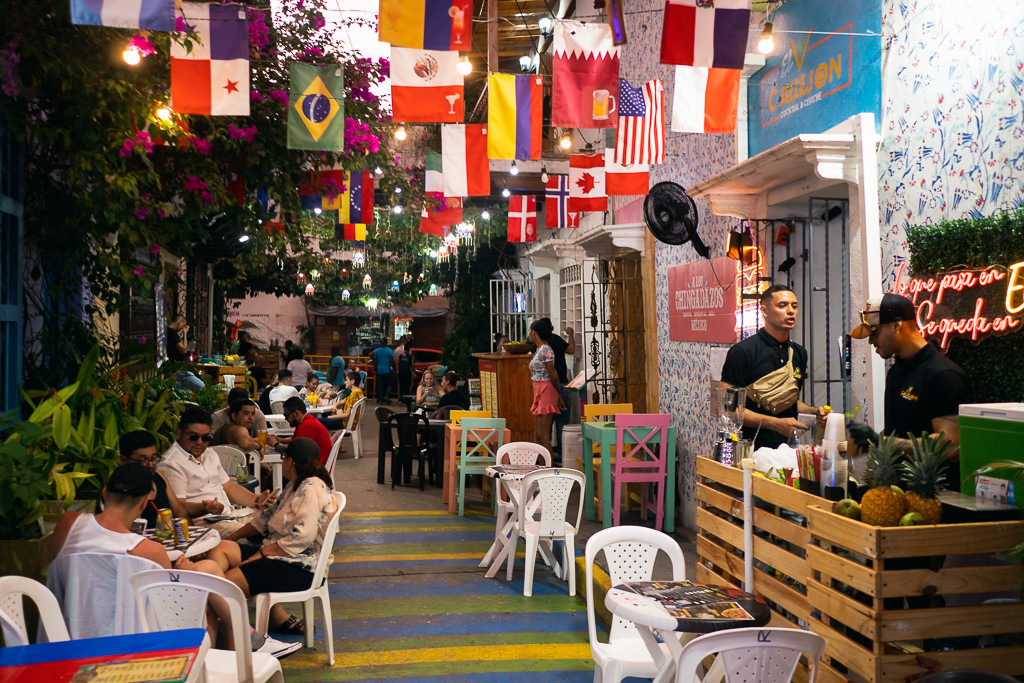
If you really want to better get to know Colombia, it is definitely helpful to know Spanish. I’ve previously shared my experiences with Spanish in Latin America. It’s a lot more fun when you can have meaningful interactions with everyday Colombians and not just those working in the tourism industry.
Learning a little bit ahead of time or using a translation app can help you navigate the city and communicate with locals.
Are there good beach resorts in Colombia?
There definitely are beach resorts, though this type of tourism is much less developed than in, say, Mexico or Thailand.
You can find mainly a lot of wonderful ecolodges and smaller-scale beach hotels along the northern coast (east of Santa Marta). There are also a number of larger beach resorts around Cartagena and the islands near it, including luxury resorts.
The Colombian island of San Andres, which is actually closer to Nicaragua, also has a lot of beach resorts and bigger hotels with pools.
Colombia is perfect for cultural trips or ecotourism, but it’s great for a beach holiday too. Just don’t expect something on the scale of Phuket or Cancun. Of course, this can actually be a good thing if you’d like some beach time on a less-spoiled coast!
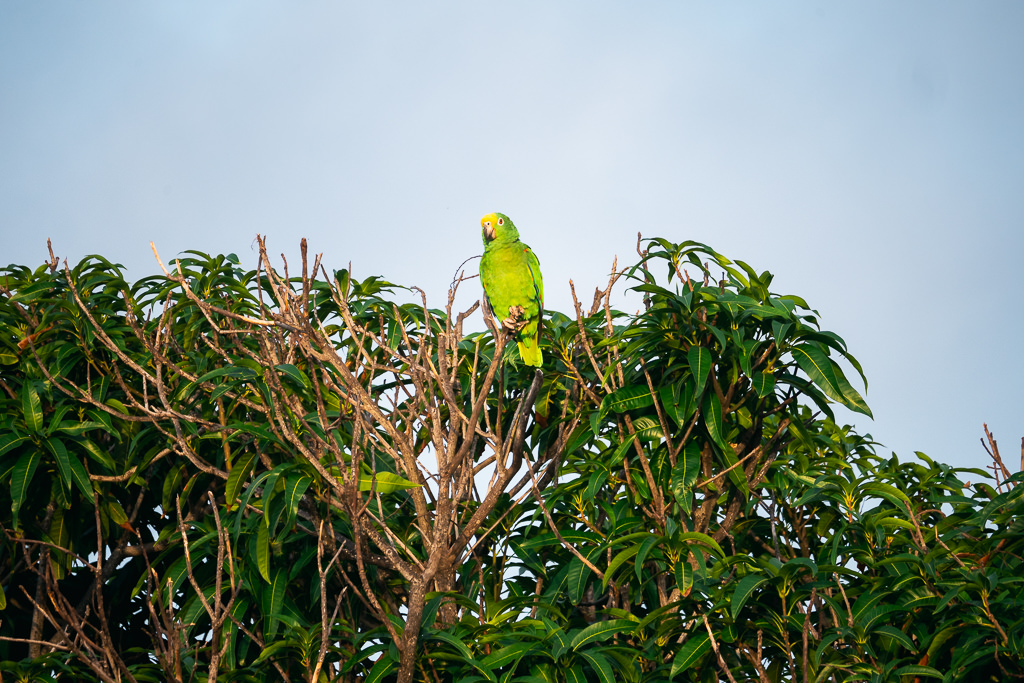
I love nature! Is Colombia right for me?
100% yes. The biodiversity in Colombia is absolutely off the charts — in fact, ranked second in the whole world.
Ecotourism is still in its relative infancy, but the potential is easily as great as, say, Costa Rica (a destination famed for its ecotourism).
Birdwatching, whale watching, monkey watching… whatever you want to watch, you can surely watch it in Colombia. Hiking and other outdoor activities like climbing and canyoning are also offered in many regions.
Check out these top ecotourism experiences in Colombia.
Unique experiences
Where can I eat some big ass ants?
Great question!
The delicacy known as Hormigas Culonas can be found in San Gil and a few other places in the Santander region. It’s pretty fun to try. You can read my report here.
Okay, no one ever actually asks this question, but it’s one of several fun foods you can experience in Colombia. Maybe it’s something you didn’t know you wanted to ask…

What’s up with Colombia’s enormous palm trees?
Another excellent question, imaginary asker!
The Quindío wax palm tree is a national symbol of Colombia and it’s the largest palm tree in the world. These towering trees grow as tall as 200 feet or 60 meters and are quite the sight to behold.
The small town of Salento is the prime spot for hiking amongst the epic wax palms. A lot of visitors to Colombia consider this one of the key highlights.
There is also a much less-known wax palm forest in the Valle de Samaria and another in Tochecito. I wrote about all these places here.
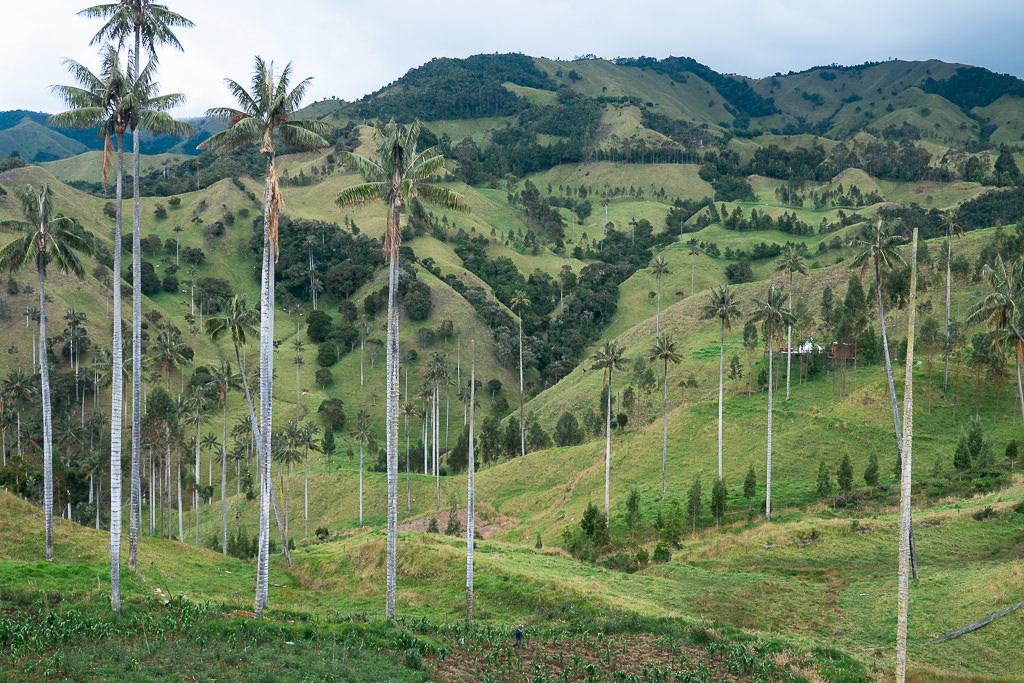
What’s the best Pablo Escobar tour?
Yep, think of Colombia and many will think ‘Pablo Escobar’.
Honestly, this part of Colombia’s still-recent history is rather fascinating, and you’ll have plenty of opportunities to learn about it if you’re interested — particularly in Medellin.
Do keep in mind that locals tend to frown upon tours that overly commercialize the terrible legacy of Pablo Escobar. It’s remembered as a dark chapter, so approach the topic with some sensitivity. Clueless foreigners might sometimes think of Escobar as a ‘cool crime boss’ or an icon, but he was responsible for so much suffering and death.
The phenomenal Real City Walking Tour in Medellin, which is about Medellin and Colombia in general, is a great way to also learn a lot about the Escobar era.
Can you do the Lost City Trek on your own?
The Lost City hike is a popular multi-day experience in the mountains near Santa Marta (you can read more about the Lost City hike here).
Many people want to know if you can do it without a tour. However, visits to this protected park are strictly regulated and only a few tour companies have permission to take groups inside.
There are always a few travelers wondering if they can get around the rules somehow, maybe by bringing their own tent or sneaking into the park. The answer is quite simply no (people have tried!). The local indigenous tribes have given permission only for guided tours; the tour money is meant to be shared with them, as well as other ‘powers that be’ that control the region, so they don’t want any stray visitors and will kick them out.
It’s not possible to do it independently, though if you’re really into hiking by yourself then there are plenty of other options around Colombia (which will also be much less crowded).

Where to go
What are the most touristy places?
Colombia doesn’t yet typically suffer from true over-tourism the way some other countries do, at least in my opinion. It’s easy to escape the crowds if you want to. However, I would nominate three places for being quite touristy. They’re each great places to visit, just don’t expect to be the only visitor here:

Cartagena is by far the most touristy place in Colombia, though not entirely to its detriment. If you like beautiful colonial architecture, colorful street art, boutique hotels, and trendy restaurants, then it’s the perfect place to go. It’s great for a Caribbean holiday feeling and you’ll constantly see gorgeous snap-worthy buildings or street scenes. It does have a high ‘Instagram’ factor that may not appeal to everyone.
Guatape, a popular day trip from Medellin, also gets very busy and gets mixed reviews. Some love it, some don’t. The views are amazing but just know it’s quite a commercialized weekend resort. It’s better to visit Guatape on a weekday when there are fewer domestic tourists.
Salento is a mountain town near Valle del Cocora, home to the world’s tallest wax palm trees. It gets quite crowded these days, and while it’s definitely a great place to go there are also several alternatives to Salento.
What are some hidden gems?
There are a LOT of under-visited places in Colombia!
This is partly due to the security situation having been historically so bad. Even though it’s so much better now, tourism has not fully caught up to this reality everywhere. That means you can find some delightfully underdeveloped places if that’s your jam.
Here are a few suggestions:
- Capurgana near Panama is very undiscovered.
- The Pacific Coast of Colombia is absolutely mindblowing, especially during whale season.
- Southern destinations such as Popayan and San Agustin are really nice while not featured on the typical itinerary
- There are lots of underrated towns in the Zona Cafetera
I’ve not yet been but heard great things about the Amazon region around San José Del Guaviare, as well as the city of Villavicencio in the plains of Los Llanos that’s on the way there. Since San Jose is reachable overland, I wonder if backpackers will start going there as an alternative in the Amazon to Leticia, which is only reachable by plane.
It’s usually backpackers seeking out the new travel frontiers, so read more about backpacking in Colombia if you’re excited about exploring the country far and wide.
Getting in & getting around
How can you get to Colombia?
In many South American countries, the capital will be your only option for international flights, but this is different in Colombia.
There are many international flights to Bogota, but also to Medellin, Cartagena, Barranquilla, Cali, and even Pereira.
So be sure to check your options when searching for flights. There may be a cheaper flight going to a secondary airport.
The USA is especially well connected (often via Miami), but even from Europe, there are direct flights to Colombia, including to cities other than the capital. For example, there are direct flights from The Netherlands to Cartagena.
As for border crossings, you can travel overland to or from Ecuador. There is also a land border with Venezuela, though that’s a difficult country to travel to at the moment. There is NO land connection with Panama.
If you go into the Amazon to Leticia, you have a border with Brazil and Peru as well — but onward travel from here will typically involve slow river boats.
How can you get around Colombia?
Coach buses are the best way to get around. Not every bus can be booked online, but a great platform to check is 12Go, which has many Colombian bus companies included.
If you’ve traveled in Asia you probably already know 12Go, and it now also covers South America.
You can search for transport options in Colombia below.
You can also simply go to the bus terminals and see what tickets are available. There are usually many companies servicing the same routes, each with its own ticket desk.
Besides long-distance buses, you may use minivans, taxis, or moto-taxis for more local trips.
Sometimes it can be worth it to take a domestic flight. Budget airlines such as Wingo, VivaAir, Easyfly, and Satena often have good deals available. Even flag carrier Avianca has internal flights that are not so expensive.
Do you need a visa for Colombia?
No visa is necessary for most travelers as most countries are granted 90 days in Colombia without a visa. I still recommend checking a site like Visalist.io to be sure.
Do you need a yellow fever vaccine?
I get this question a lot. To the best of my knowledge, it’s no longer an entry requirement for Colombia to have a yellow fever vaccine, unless you arrive from Angola, Brazil, the Democratic Republic of Congo, or Uganda (or you transited via those countries for over 12 hours).
As for other vaccines, you may wish to consult a travel health advisor. However, medication (such as malaria prevention medicine) is generally not advised unless going deep into the Amazon.
Money matters
What’s the average daily budget for Colombia?
Colombia is a fairly budget-friendly destination overall, but everything depends on your travel style.
If you’re a backpacker staying in hostels or budget guesthouses, I recommend budgeting around $40 USD a day per person. If you’re particularly frugal, you can do it for about $30 a day, but it’ll probably involve cooking some of your own meals and avoiding paid tours for the most part.
Something in the range of $60 – $70 USD per day will let easily you travel with more comfort — for example, staying in nicer boutique hotels or taking some private tours.
The exchange rate between currencies like Euro or USD and Colombian Pesos is particularly favorable at the moment (I’m writing this in 2023), so keep this in mind when looking at travel budgets from a few years ago. It’s a good 30% or so cheaper now than in 2018, for example, when converting from Western currencies.
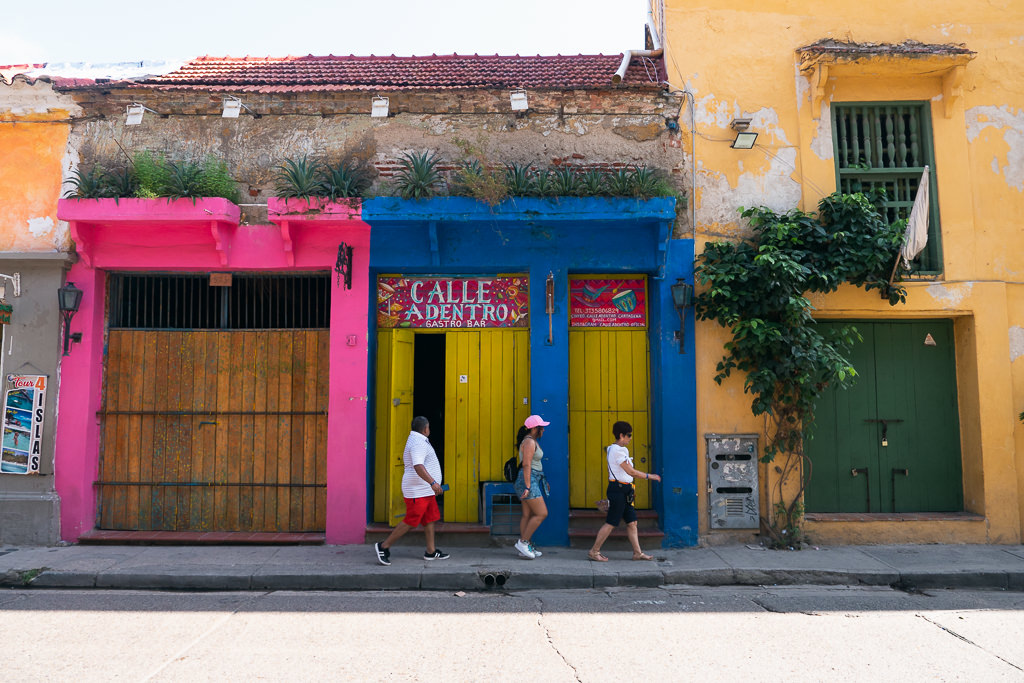
How to pay for things in Colombia?
The most common options for paying for things in Colombia are by cash or credit card. Many businesses are now accepting major credit cards, but I recommend always having cash as many local places and taxi drivers only accept cash.
There are plenty of ATMs all over the country and you can find ones with low fees making it easy to withdraw cash.
The local currency in Colombia is the Colombian peso. The Colombian Peso is a very high-denomination currency, but 25,000 COP is the equivalent of only about $5.
At first, it can seem insane when a taxi driver tells you your ride is 10,000 COP, but you will quickly get the hang of the currency and it won’t seem as daunting.
Practical tips
When is the best time to go?
The best time to visit Colombia is from December to March when the weather is generally mild and pleasant with hardly any rainfall.
However, this is also the peak tourist season in Colombia, so if you want to avoid crowds and higher prices, it may be best to travel during the spring or fall instead.
In most places, the rainy season is at its peak in September and October. Jun-Aug is also sometimes referred to as a ‘rainy season’, though having traveled extensively in Colombia in June/July I wouldn’t actually have said so. Apart from a few heavy showers, there were plenty of sunny days and mild temperatures, and I thought it was a wonderful shoulder season to travel in Colombia.
What’s the climate like in Colombia?
More varied than you may expect — at least just looking at the tourism promotions featuring only tropical beaches!
The geography of Colombia results in a lot of different (micro)climates. The north can be swelteringly hot, while cities at higher elevations like Bogota can be chilly, especially at night. The Pacific Coast is known as one of the rainiest places on Earth. It’s highly worth visiting, but don’t expect to stay 100% dry.
Thanks to being near the equator, the seasons are not so extreme, so actually, most months in the year are pretty good times to visit — apart from maybe the very peak of the rainy season around September and October.
What should you pack for Colombia?
Definitely pack your flip-flops and summer outfits, but remember to also pack something warm for the evenings or mountain locations.
Colombia is not only tropical heat and sunny beaches!
I typically manage to do without a big jacket, though a hoodie with a windbreaker or other light jacket can be useful in Colombia for sure, though it depends on where exactly you will travel. In general, it’s good to be prepared for different types of weather.
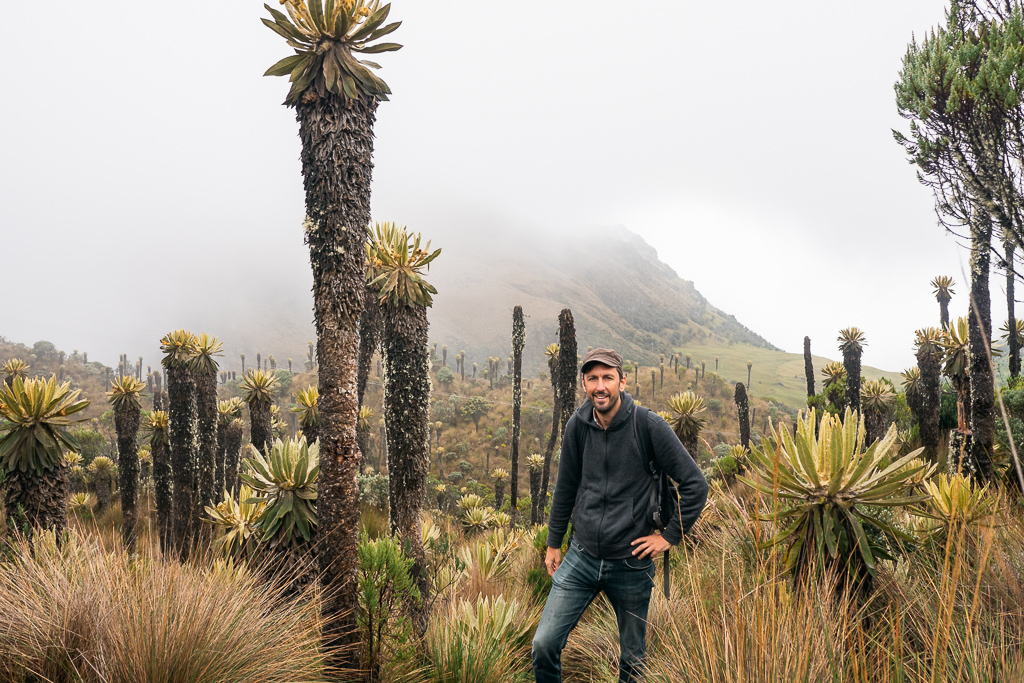
Bring a good raincoat, hiking trousers, and boots for jungle locations such as the Amazon. A rain cover for your daypack can be useful there as well.
You might want to bring some anti-mosquito spray, a hat, and high-factor sun lotion. Otherwise, just pack what you would normally pack for a trip.
What plug type is used?
The plug type in Colombia is the standard North American style with two flat prongs. If you don’t want to worry about plug types on your world travels, get a universal plug adaptor.
What’s internet connectivity like?
It’s pretty great in the cities but (expectedly) more of a mixed bag in the countryside.
Besides WiFi, it’s easy and cheap to get a local SIM card. Just get your SIM in an official shop in a larger city. For example, search for “tienda claro” (Claro shop). Claro is one of the main mobile service providers.
Once you have your prepaid data sim, you can always top it up in any small shop or grocery store that has the Claro sign (even in very small towns). Ask them to buy a ‘paquote’ (a top-up package) and get the seller to enter the code for you.
The internet is usually quite fast with at least 4G coverage.
Some links may be affiliate links, meaning I may earn commission from products or services I recommend. For more, see site policies.
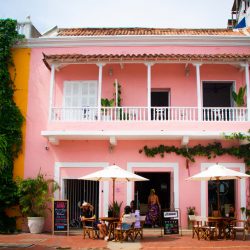
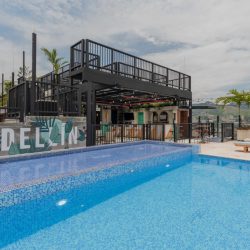




Hi.
Great info.BUT, an arepa it’s not a soup.It looks like an English muffin, and we eat it as a sandwich,or as a side dishetc.
I have no idea why it says arepa when I meant ajiaco. I’ve had plenty of both so it must have been a brain fail! Thanks, I’ve corrected it 🙂